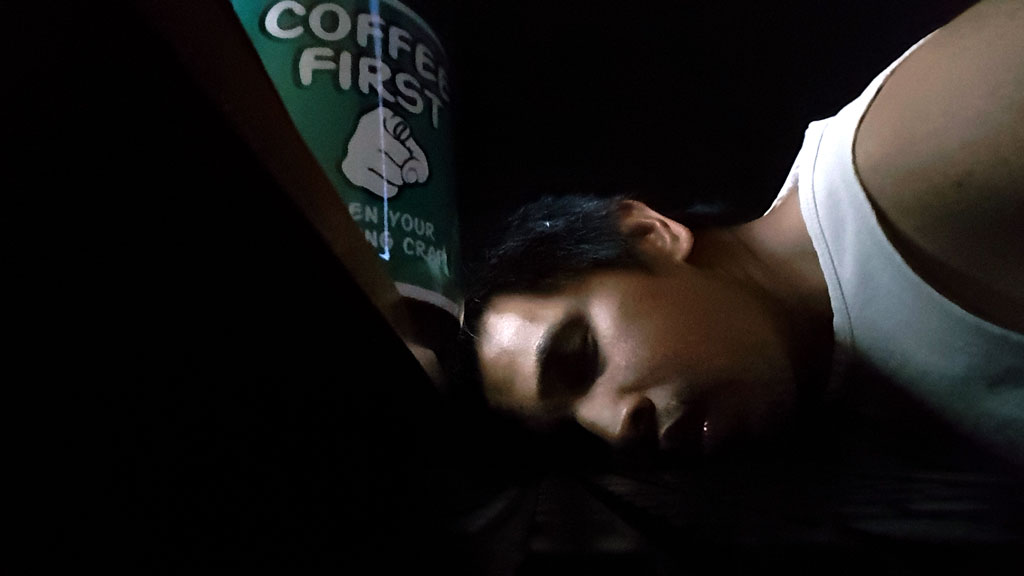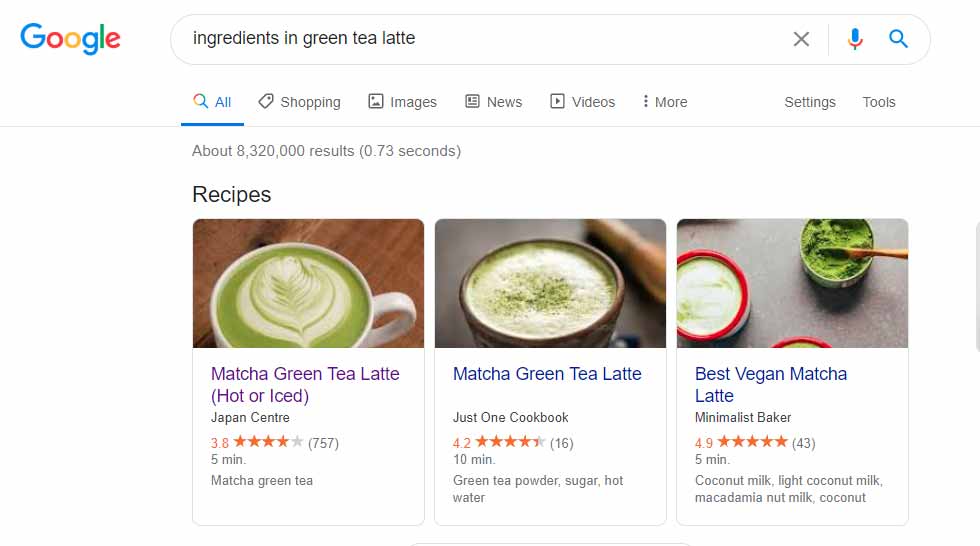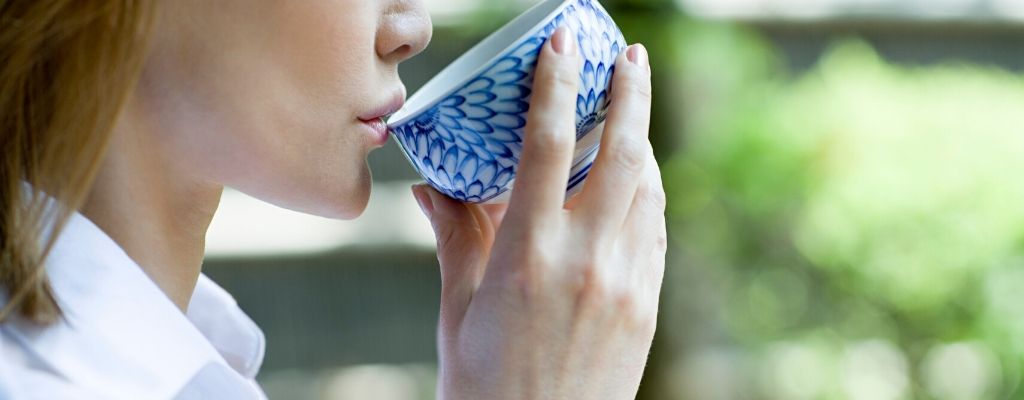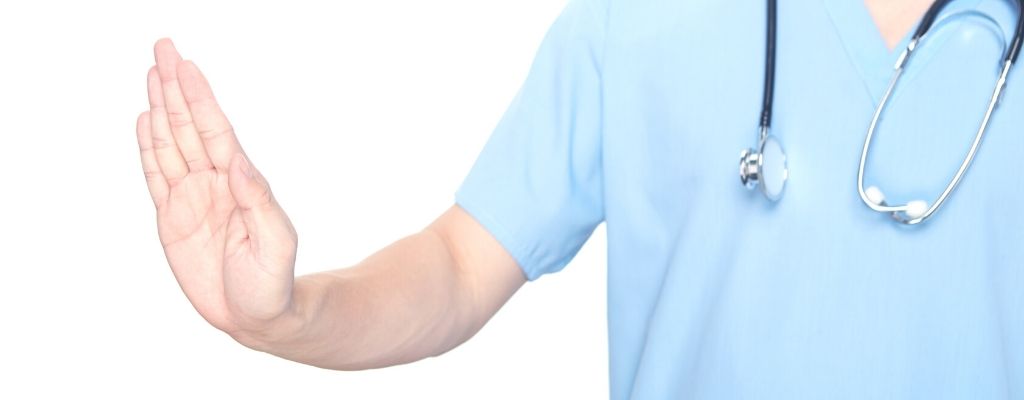
Do you want to lose belly fat?
Does coffee make your heart jump out of your chest?
Are you stressed out?
If you answered yes to one or all of the above, Matcha might have your answer.
Let’s dig deep into research, facts, and years of Japanese culture to verify the BIG question. Does matcha burn belly fat?
- Does Matcha burn belly fat, or is it just a myth?
Does Matcha burn belly fat, or is it just a myth?
The notion that Matcha can burn belly fat was absurd to me until I saw this research.
“Matcha green tea drinking can enhance exercise-induced fat oxidation in females.”
[source: Matcha Green Tea Drinks Enhance Fat Oxidation During Brisk Walking in Females.]
In a study of 13 different women, age 27 to 35, drinking matcha green tea raised their resting metabolic rate.
Furthermore, drinking matcha green tea 2 hours before 30 minutes of brisk walking enhanced fat oxidation.
The study was focused on females. However, below is a research about the effect of green tea extract in males.
“…to 12 Asian males during a 12-wk period… GTE (green tea extract) has been shown in some studies to increase fat oxidation at rest and during exercise…”
[source: The Effect of Green Tea Extract on Fat Oxidation at Rest and during Exercise: Evidence of Efficacy and Proposed Mechanisms]
This research echoed the same result as the first study but in men.
So, does matcha burn belly fat? Research suggests it does.
Before you go out and buy a truckload of Matcha, hold your horses! Now that you know Matcha does burn belly fat, here’s everything you need to know to get you started the right way.
And if you want to know more about losing belly fat click on the following links below:
Coffee addict story

I was an avid coffee drinker since college. I was so enthusiastic about coffee that I bought coffee beans, coffee burrs, drippers, and filters to brew my coffee. Oh, and let’s not forget the kitchen scale. I even bought a milk frother which I never use, that was a waste of money.
Little did I know, all these coffee equipment are all about to go to waste along with the milk frother.
These days, whenever I drink coffee, my heart wants to rip out of my rib cage and palpitate terribly on the floor.
So, my coffee adventures are done — a cruel world. I do enjoy coffee now and then in the form of decaf. But, It’s not the same. *sad face*
Coffee alternative?
Although I could still savor the taste and smell the aroma of coffee with decaf, I do miss that buzz.
I often write in the wee hours of the morning, after midnight, usually because that is when my brain is focused and creative.
Also, the little nipper is fast asleep.

The problem with writing so late or early is that I often write myself to sleep.
Coffee was always there to keep my head off the keyboard and the keyboard dry from my saliva.
So, I had to find something to keep me on a high at midnight.

I thought about stimulants (cocaine), but the thought of getting addicted to illicit drugs brings shivers down my spine and wallet. Drugs are out of the question.
To fill my emptiness, I drank black tea. It helps, but black tea doesn’t have that same energy coffee brings.
What is the best coffee alternative!? I shouted in my mind, of course. I’m not crazy. Not yet, anyway.
I accidentally found the best coffee alternative
I wasn’t really in search of the best coffee alternative, IT found me.
My partner and I were at the airport on our way to the Philippines. After checking in, my partner wanted coffee so she can make me jealous, of course.
We found a cafe not far from the check-in area, and my partner ordered a cap. I saw their menu and saw a green tea latte. Green tea doesn’t have caffeine, right? I asked. The server shook her head. Okay, I replied. I’ll have one thanks.
The green tea latte was sweet even when I specifically said no sugar.
Sweet or not, I drank it all. I did pay $5.40.
After take-off, I usually get ready to sleep. However, something weird was happening to me.
My mind was buzzing, like someone just turned on the Christmas lights at Santa’s house.

I didn’t sleep. I wrote a sales copy during that 8-hour flight.
The sales copy was for a free ebook. Why would I write a sales copy for a free ebook?
Well, at the time I thought of selling the book, but realized, this book should be given away to educate beginners on the importance of nutrition and what it can do to keep your body fit and healthy.
If you want the free ebook, click on the link below.
I wondered how I didn’t sleep the whole flight. Moreover, how could I write an entire sales copy without any microsleep?
It finally hit me while waiting for our bags at the luggage carousel.
Ah, green tea latte! I shouted in my head. Again, not crazy yet.
Green tea latte is a matcha latte
How did green tea keep me awake? More importantly, how did my creative juices flow out onto the keyboard?
So, I did what a near millennial would do. I Googled:
“ingredients in a green tea latte.”
The google results included matcha green tea latte. What is this, Matcha? I asked myself.

What is Matcha?
So, more googling entailed.
“Hey, Google, what is matcha?”
A brief history of Matcha, and this may surprise you. Despite its name, Matcha originated from China.
“In China, during the Tang dynasty (618–907), tea leaves were steamed and formed into tea bricks for storage and trade. The tea was prepared by roasting and pulverizing the tea, and decocting the resulting tea powder in hot water, then adding salt. During the Song dynasty (960–1279), the method of making powdered tea from steam-prepared dried tea leaves, and preparing the beverage by whipping the tea powder and hot water together in a bowl became popular.“
[source: Matcha]
Matcha is from the green tea plant, Camellia Sinensis, which is also made into tea bags. The difference from steeped green tea bags is that Matcha is grown under shade for 3 to 4 weeks. This process of growing green tea plants under a shade produces a significant amount of theanine and caffeine.
Also, Matcha is grounded to powder form instead of being broken down into smaller pieces.

In 1191, Matcha was brought into Japan by a Buddhist monk, Eisai, and it became an essential item among monasteries. By the 14th century, Matcha was highly regarded by the upper-class society.
Matcha originated from China but never became popular. Why?
My theory is that it takes some time and effort to prepare. Patience is one of the core values in Japanese culture. In contrast, steeping a bag of tea leaves in hot water is easy peasy.
How to prepare Matcha
Traditionally, Matcha is prepared with a bowl and a whisk. There are 2 types of matcha preparation.
Those 2 types are Usucha and Koicha.
Usucha is the weaker and thin version.
Koicha is the stronger and thicker version.
The main difference is the amount of water, and tea powder added. Other than that, the preparation is the same.
Usucha preparation:
- Sift 1 teaspoon (2 grams) of Matcha in a chawan bowl.
- Pour 70 ml of 80-degree Celcius water into the bowl.
- Use the bamboo whisk and whisk away using the W technique.
- W technique is writing a W with your bamboo whisk.
- Whisk until you get foaming. Some like it foamy, and some will stop at the first sign of foam.
- The consistency is runny, watery, and thin.
- Enjoy while warm and within 3 minutes.
Koicha preparation:
- Sift 1 teaspoon (4 grams) of Matcha in a chawan bowl.
- Pour 50 ml of hot water into the bowl.
- Use the bamboo whisk and whisk away using the W technique.
- Once the consistency becomes thick and paste-like, stop.
- Unlike Usucha, you will not get any foam. Enjoy it while warm and fresh.
Here is a video from the Zen Temple, Kennin-Ji, Kyoto, Japan, using the usucha method.
Sometimes I can’t be bothered doing all these siftings, whisking and prepping so I use the bottle shake method.
Bottle shake preparation:
- Sift 1 teaspoon of Matcha into a leak-proof bottle.
- Add 100 ml of warm water. Don’t use hot water because it will create pressure when shaken.
- Vigorously shake the bottle for 30 seconds to a minute.
- Drink and enjoy.
The video below by Yoshiko sums up matcha bottle prep very well:
Matcha hot latte preparation:
- You can either use the usucha method or the bottle shake to mix with the milk.
- While you are preparing the Matcha, pour 150 ml – 200 ml of milk into a mug and heat it.
- When the matcha powder is adequately mixed, add it to the hot cup of milk and voila! A delicious hot latte without the sugars, creams, and unwanted calories.
Use any variety of milk you prefer. I love almond and soy milk with my matcha latte.
Matcha cold latte preparation:
- To make preparations quicker, add 250 ml of milk in a bottle.
- Mix in 1 teaspoon of Matcha.
- Shake vigorously and voila! Cold latte in 2 minutes.
Usucha is the most common method and practiced by most households in Japan. A medium grade matcha is recommended.
Use the koicha method when using a high grade of Matcha. Low-grade Matcha will produce an overpowering bitter taste that might make you vomit. Matcha, after all, is an acquired taste. Premium-grade Matcha is mellow, less bitter, and has a distinct umami taste.
Reserve the bottle method for low-grade Matcha. Milk or other ingredients balances out the bitterness of low-quality Matcha.
To save you some money, here’s a tip. If you are looking for matcha powder for you to make lattes at home, buy low-quality Matcha.
Now, when I say low quality, it doesn’t mean it has fewer antioxidants or provides fewer health benefits compared to the high-grade Matcha.
The only difference between low and high-quality Matcha is leaf selection and blending.
Low-quality Matcha is from older leaves, while the baby leaves are for premium grade.
Low-quality Matcha is blends of leaves from different farms. And premium matcha comes from a single farm.
Moreover, you will lose the essence of premium matcha in lattes, making your latte boring with a single flavor profile.
The matcha taste
How does matcha taste? Well, premium matcha is sweet, almost non-bitter, and has this distinct umami taste.
The medium grade matcha can be a tad bitter but still has a mellow taste.
The lower grade matcha has a sharp, slightly bitter taste.
The higher the quality, the less bitter, and the sweeter a Matcha tastes. Some even say that children can enjoy the best quality matcha. I would err on that one. Matcha still is an acquired taste.
Matcha caffeine
Matcha green tea has caffeine. A teaspoon of Matcha can have 70 mg of caffeine. A cup of coffee has 100 mg of caffeine.
I used to think steeped green tea has no caffeine because I drink them all the time, yet I don’t feel any buzz.
In reality, a cup of steeped green tea can contain 25 milligrams. Now, that is not enough to give you that boost like Matcha or coffee can.
Matcha benefits

Here are the goods about this vibrant green superfood:
1. Reduces stress
A teaspoon of Matcha can contain as much caffeine as in a cup of coffee.
Caffeine is a stimulant which, on its own, can increase stress. However, when you combine caffeine with theanine, something remarkable happens.
The usual effect of caffeine is canceled out by theanine. It’s important to note that for the calming effect to happen, theanine has to be 10x the amount of caffeine.
Matcha is grown under shade, out of the sunlight for 3 to 4 weeks. This method of growing green tea raises the number of amino acids, such as theanine, caffeine, and catechin.
The higher the number of amino acids, the higher level of “umami.”
When green tea leaves are grown in the shade, the amino acid’s balance changes.
The theanine and caffeine increase while catechin reduce. The balance of amino acids plays a vital role in the stress-reducing effect of Matcha.
[source: Stress-Reducing Function of Matcha Green Tea in Animal Experiments and Clinical Trials]
2. Matcha and the brain
Matcha benefits just get better by making you a little bit brilliant. The study on the three amino acids in matcha green tea concluded it could improve concentration and memory.
In a study, 23 matcha lovers participated in 4 sets of tests. The test consists of ingesting a matcha drink, a matcha bar, a placebo drink, and a placebo bar, each containing 4 grams of Matcha except the placebo drink and bar.
The participants recorded increased attention abilities and psychomotor abilities.
One thing to note in this study is that the matcha bar didn’t perform as well as the matcha drink.
[source: An intervention study on the effect of matcha tea, in drink and snack bar formats, on mood and cognitive performance.]
3. Lose weight with Matcha
Does matcha burn belly fat? It can make you lose weight as match-as you want!
As mentioned before, Matcha helps in weight loss. Again, the best time to drink Matcha if you want to maximize fat burn is before your workout. A good guideline is to drink Matcha 30 minutes to 2 hours before cardio.
So, you can have your Matcha before you drive to the gym, do your strength training, and then cardio. All within 2 hours or less.
4. Matcha and the liver
Studies suggest that Matcha green tea may protect the liver against damages.
A group of 80 people with non-alcoholic fatty liver disease participated in a clinical trial to find whether green tea extracts can help.
There were 2 groups of 80 participants. One group was to receive 500 mg of green tea extract (GTE), and the other group had a placebo.
At the end of the trial, 12 weeks, there was a significant reduction of liver enzymes in the GTE group. There were no substantial changes in the placebo group.
When using a regular teaspoon instead of a traditional chashaku, you’ll only need 1 scoop for one serving of Matcha.
It’s important to note that half of a regular teaspoon of Matcha can give you more than 500 mg of green tea extract.
[source: The Effect of Green Tea Extract Supplementation on Liver Enzymes in Patients with Nonalcoholic Fatty Liver Disease]
5. Jam-packed with matcha antioxidants
Oxidation is a natural process as we age that produces free radicals that may cause cancer and disease. Don’t worry because it’s also natural for our body to produce cells to kill these harmful free radicals.
However, your body may get additional free radicals via eating, smoking, radioactive exposure, air pollution, and industrial chemicals. Heck, you’ll even get them doing something healthy like exercising.
When the balance goes awry, our body goes through oxidative stress posing a significant threat to our health.
Antioxidants help by killing free radicals.
A single matcha serving can give you a whopping dose of antioxidants. Matcha has 137 times more antioxidants than regular green tea.
Regular green tea’s antioxidants are extracted by steeping in hot water. With this method, you don’t get the full benefit.
While in Matcha, you ingest the whole leaf, giving you an uber amount of antioxidants.
It’s also important to realize the importance of getting antioxidants from natural sources such as fruits and vegetables.
Reports have shown that manufactured antioxidant supplements are not as effective and even poses potential risks for some individuals.
You should consider the following when thinking of antioxidants supplements:
- “Do not use antioxidant supplements to replace a healthy diet or conventional medical care, or as a reason to postpone seeing a health care provider about a medical problem.
- If you have age-related macular degeneration, consult your health care providers to determine whether supplements of the type used in the AREDS trial are appropriate for you.
- If you are considering a dietary supplement, first get information on it from reliable sources. Keep in mind that dietary supplements may interact with medications or other supplements and may contain ingredients not listed on the label. Your health care provider can advise you. If you are pregnant or nursing a child, or if you are considering giving a child a dietary supplement, it is especially important to consult your (or your child’s) health care provider.
- Tell all of your health care providers about any complementary health approaches you use. Give them a full picture of what you do to manage your health. This will help ensure coordinated and safe care.”
[source: Antioxidants: In Depth]
6. Fights cancer
Matcha has natural properties that may help with the propagation of cancer stem cells.
In a study to further research the effectiveness of Matcha in cancer, the results were promising.
The research found that components in Matcha inhibit cancer cells and may aid in chemotherapy treatments by weakening cancer cells.
[source: Matcha green tea (MGT) inhibits the propagation of cancer stem cells (CSCs), by targeting mitochondrial metabolism, glycolysis, and multiple cell signalling pathways]
7. Matcha for skin cancer
Melanoma is a skin condition caused by prolonged exposure to UV rays. With the threat of global warming and the thinning of the ozone layer, cases of skin cancer continue to increase.
Australia and South Pacific countries hold the highest case of melanoma. The proximity of South Pacific countries to the sun during the summer months only makes it worse.
[source: Impact of climate change on skin cancer]
Mice were administered with green tea extracts and resulted in significant protection against the development of skin cancer.
Based on the data from animal studies, drinking green tea can provide the same protection against melanoma.
[source: Green tea prevents non-melanoma skin cancer by enhancing DNA repair]
8. Matcha and heart health
Catechin contained in matcha green tea may have protective benefits for our hearts. Catechins have shown to reduce the bad cholesterol, which seems to be the reason why Matcha is heart-healthy.
[source: Green Tea Catechins and Cardiovascular Health: An Update]
How much Matcha is too much

Matcha is a great beverage to start drinking every day. However, too much of everything can be harmful.
For one thing, Matcha does contain a fair amount of caffeine. In saying that, I drink 2 cups of Matcha a day, but the caffeine terrible effects such as the jitters, palpitations are non-existent.
In contrast, 1 cup of coffee gives me the shakes, and my chest throbs within the third sip.
There’s also fear of kidney stones forming when drinking too much green tea due to its high oxalate content.
However, this 2 research says otherwise:
Effects of green tea on urinary stone formation: an in vivo and in vitro study by Department of Urology, Seoul National University College of Medicine and Clinical Research Institute, Seoul National University Hospital, Seoul, Korea. [source]
They divided the rats into 3 groups. All administered the first group with regular food and water. Group 2 was given oxalate and antibiotics. Group 3 was assigned the same as group 2 with green tea.
They then killed the animals for close examination of their kidneys. The result looked promising for green tea.
Group 2 had a significant number of crystals within the kidneys compared to group 3 (green tea).
There is also another study to find whether green tea causes kidney stones to form found no signs of correlation.
Oxalate is an organic acid found in green teas which in high amounts can create kidney stones. Green tea has a fair amount of oxalate, but black tea has a significant number.
Oxalate binds to calcium and can form kidney stones. The methods and materials are the following:
- There were 273 participants in the research.
- One group was given a cup of 250 ml – 300 ml of green tea drink.
- The other group didn’t drink tea.
There was no evidence of oxalate or formation of stones in the green tea group.
[source: Daily Green Tea Infusions in Hypercalciuric Renal Stone Patients: No Evidence for Increased Stone Risk Factors or Oxalate-Dependent Stones]
There is no definite proof of why the green-tea drinkers didn’t develop kidney stones. However, there is speculation that the antioxidants (catechin) contained in green tea inhibit the formation of stones.
So, how much Matcha is too much?
From experience, 2 cups of Matcha a day containing 1 teaspoon each are more than enough to get its health benefits. Heck, 1 serving is more than enough. I love Matcha, so I have seconds.
I would love to tell you that consuming more than 10 cups of Matcha is safe, but there is just no research.
There are numerous studies on green tea bags and loose leaf teas, but there are only a few investigations on powdered matcha green tea.
I suggest determining your requirements or limitations. Consider the amount of caffeine in Matcha. Although the theanine counteracts the jittery effects of caffeine, you are still drinking caffeine.
You also have to think about whether the oxalate in Matcha might increase your risk of getting kidney stones. In saying that, studies have shown that the catechin in green tea hinders the formation of kidney stones. A proper examination is needed.
Studies concerning powdered Matcha green tea are limited. But Japanese have been consuming Matcha since 1191.
All I know is that Matcha is a great alternative for coffee. And I need caffeine to help me write these articles in the wee hours of the morning.
Where to buy Matcha
I used to purchase Matcha straight from the farms of Uji, Kyoto, Japan. I would like to think that I am a true lover of good Matcha. Although it comes at a costly price tag, it’s well worth it.

Now, it may not be for you, and you could just be starting and would like a taste. But you don’t know where to buy Matcha, the good one anyway.
Beware of cheap Matcha. When it comes to Matcha, the saying, “you get what you pay for” rings true. I have heard of matcha manufacturers save costs by sacrificing quality.
If I can recommend something a bit more local to the U.S., you should try this Matcha from Amazon. They continually receive rave reviews, which is a good indication that they are customer-focused, and quality is their top priority.

I buy from them when I lose track of my matcha stock and run out. And I dislike the Matcha from Starbucks or any cafe because they use sugar-laden Matcha.
Midori Springs usually deliver within 3 days which is a good thing because I can barely hold out for 3 days without drinking real Matcha.
Does matcha burn belly fat? The short version.
Does matcha burn belly fat?
Yes, it does.
I was a coffee addict, and I love it.
But my world came tumbling down when my heart feels like exploding after a sip of coffee.
I needed a caffeine replacement to prevent my head from hitting the keyboard in the middle of the night when writing.
I found the coffee alternative in the form of an expensive plant called, Matcha.
If you are not the Matcha kinda guy or gal, consider these benefits. It might make you dump coffee.
- Reduce stress
- Boosts brain function
- Lose weight
- Protects the liver
- Rich in antioxidants
- Fights cancer
- Hates skin cancer
- Prevent heart disease
Before you start chugging down gallons of Matcha, consider that too much of anything can be harmful. I drink 2 cups of matcha a day, made with 1 heaping of a teaspoon per cup. Is that too much? I don’t know. Research into matcha is limited.
Remember that 1 serving of Matcha is equal to 10 cups of steeped green tea. Although it contains more of the good stuff, it also has caffeine and which can have side effects in high doses.
In saying that, the Japanese have been drinking matcha tea for centuries. And the Japanese are considered to have a long life span.
There is no detailed research as to why the Japanese live longer than most. It could be the sushi, the culture, or hey, maybe it’s the Matcha.
FAQ
How much matcha powder per day?
Japanese drink Matcha all of the time. I’m not Japanese, but I do have a last name that sounds Japanese. Tanobey? I prepare my Matcha with 1 heaping of a regular teaspoon to make 1 serving. My average daily consumption of matcha tea is 2 cups.
How much Matcha per day for weight loss?
It’s not the quantity but more of when. To maximize the weight loss benefits of Matcha, you should drink Matcha 30 minutes to 1 hour before your workout.
When to drink Matcha for weight loss?
Matcha contains a fair amount of caffeine. A cup of Matcha can have 70 mg of caffeine. Just a little less than a cup of coffee, which is 100 mg. Drink Matcha before your workout to maximize fat loss, but don’t drink it 4 hours before you hit the bed. Now, 4 hours is the general guideline, but some reports the effect of Matcha can last as long as 6 hours.
How much matcha powder for latte?
To prepare matcha latte, I use 1 whole heaping of a regular teaspoon.